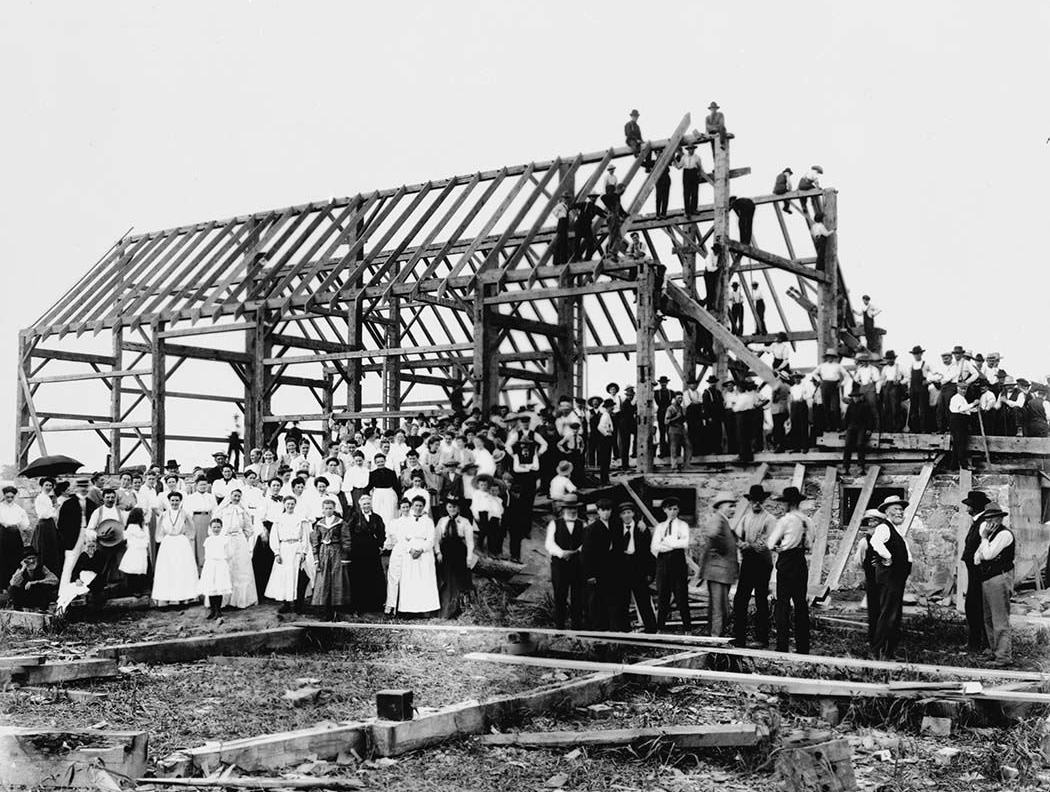Baker’s bread, store-bought food and manufactured clothing were all part of the “changes that have taken place in farm life in Ontario within…[the] recollection” of its older readers, reflects Toronto’s Weekly Sun, June 12, 1907.
These changes are scarcely noticed in the hurry and bustle of every day affairs, and yet they are nothing short of revolutionary.
The mothers of Ontario women of middle age would no more have thought of bringing baker’s bread into the house than they would have considered a proposition to buy their cooked meats at the nearest store; to-day, it may safely be asserted that in a majority of the farm homes in older Ontario, bakers’ bread is in daily use. Even so recently as twenty years ago, practically every farm home was heated by wood cut in winter from the original forest still standing on the farm; in some counties of the Province 90 per cent of the farmers now depend wholly on coal, save for summer cooking, and there is scarcely a county in which more or less coal is not used in rural homes. So completely has the timber been removed in some cases that sons, or at least grandsons, of the men who cleared up the original bush could hardly do an hour’s real chopping if their lives depended on it.
In the first decade of the latter half of the past century fresh meat was scarcely ever seen on a farm table in summer, save when an occasional lamb was killed; the number of such tables is now few which are not supplied either from the beef ring or nearby butcher. The fruit supply of the fathers of the present generation was limited to fresh wild berries in summer (dried for winter use), early apples in the fall, and dried apples in winter; their more fortunate sons begin the season with strawberries grown in the home garden, continue it with raspberries gathered from the same source, follow it up with cherries, plums, pears and grapes, and finally pick in fall applies which will keep fresh until apples come again.
Dresses for the women and coats and trousers for the men were within the recollection of those not yet past the meridian made in the home from cloth manufactured by hand looms out of the farmers’ own wool. In the matter of farm implements the change is even greater — from the hand rake to the horse rake, from scythe to the mower and the cradle in the binder, while the telephone is rapidly taking the place of the old-time road fence conversation. Still, even yet, it comes as something of a surprise to hear of soiled linen from the farm house going to the Chinese laundry. But we will grow accustomed to that in time, and to even greater changes which make for reduction of labor and increased comfort on the farm and in the farm home.
Let us at least pause long enough to remember with heartfelt thankfulness the pioneers who amid toil and privations laid the foundations of those comforts and conveniences which, but for the toil and privation of those who are gone, we would not be enjoying to-day.
Canada@150
